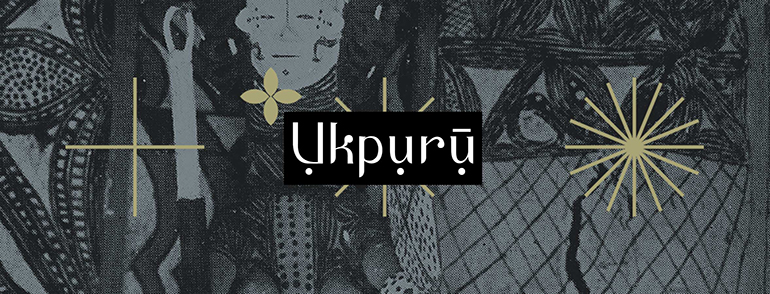
Onye Ọcha mask, Igbo parody of a white man during the colonial era from Amobia, part of a larger play. Apart from more serious ritual masks, a key part of many Igbo masquerading festivals are comedic and satirical masks. G. I. Jones, 1930s. MAA Cambridge. [Consider the photographer.]
 Ghost policemen masks, symbols of colonial powers, part of the same masquerade play as the Oyibo or Onye Ọcha mask from Amobia. G. I. Jones, 1930s. MAA Cambridge.
Ghost policemen masks, symbols of colonial powers, part of the same masquerade play as the Oyibo or Onye Ọcha mask from Amobia. G. I. Jones, 1930s. MAA Cambridge.
A performance in the Northern Ibo village of Amobia was opened by a hooded character called “Government”. He had no face and was crowned with a Homburg hat; an elephant tusk horn, symbol of authority, was laid on the ground in front of him and he read in ghostly gibberish from an important-looking document. He and his acolyte withdrew and were succeeded by a parade of ghostly policemen and court messengers wearing imitations of police and messenger uniforms and with cloth masks over their faces and head. They performed a spirited guard drill before being posted by their commander to their stations to control the crowd. Their followed a supercilious white-faced sun-helmeted figure in white drill jacket and trousers called Oyibo (White Man), who inspected the audience and then took his seat amongst the places reserved for the distinguished visitors who had come to watch the play. After him came a succession of characters, some white-faced, representing female spirits, some black or multi-coloured fierce and masculine creatures with masks that combined animal and human features; others again, mainly harmless or comic or benign, representing antelopes, or other animal spirits or characters drawn from village life. Each had his or her special role to play and having acted it withdrew to the secret enclosure or sat on seats at the ringside waiting to repeat his performance. [...] [A] large concerted display which included characters contributed by all the local societies.
– G.I. Jones (1984). "The Art of Eastern Nigeria." pp. 59-60. [Quote via MAA Cambridge.]

No comments:
Post a Comment